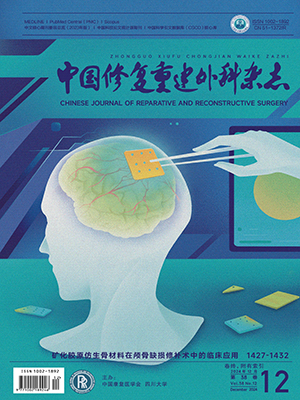OBJECTIVE: To investigate the changes of fibroblast growth factor (FGF) in burn wounds. METHODS: The FGF expression in the center of wound granulation, the edge of wound, the healed part of wound, the normal skin of patients, and the heal course of second degree burn wounds were detected by immunohistochemical methods. RESULTS: The expression intensity of FGF was different in the different sites of third degree burn wounds. The highest contents of FGF was in the center granulation of burn wounds, the less was in the borderline of wound and healed skin, and the least was in the healed skin. FGF expression mainly concentrated in the middle layer of wound, and almost no FGF expression in normal skin. The most FGF expression was occurred at 14 days after injury in second degree of burn wound. CONCLUSION: The changes of FGF in wounds are closely related to the wound healing, and rational use of FGF can promote wound healing.
Citation: GU Tingmin,NIU Xingtao,GUO Hong.. CLINICAL OBSERVATION ON CHANGES OF FIBROBLAST GROWTH FACTOR IN BURN WOUNDS. Chinese Journal of Reparative and Reconstructive Surgery, 2000, 14(5): 261-263. doi: Copy
Copyright © the editorial department of Chinese Journal of Reparative and Reconstructive Surgery of West China Medical Publisher. All rights reserved




